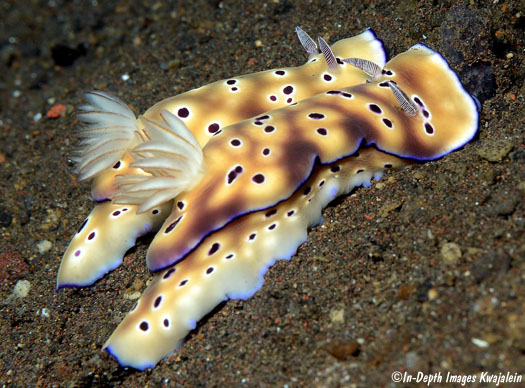
These were relatively common in the Tulamben and Padangbai areas. They are usually paired and exhibit trailing behavior, where one directly follows the other while keeping the anterior end of its foot on the trailing end of the leader's tail. Coloration is startlingly similar to Goniobranchus leopardus, which because the two are in different genera, probably means this is either an unlikely accidental resemblance or a case of Mullerian mimicry. In Mullerian mimicry, all the species that mimic each other are protected in some way, here by poison glands in the skin. Basically, this reduces the "learning curve" of training each new predator that a particular color pattern is inedible. If several other species look like you, the predator is more likely to spend its time learning not to eat things like you by tasting someone else.

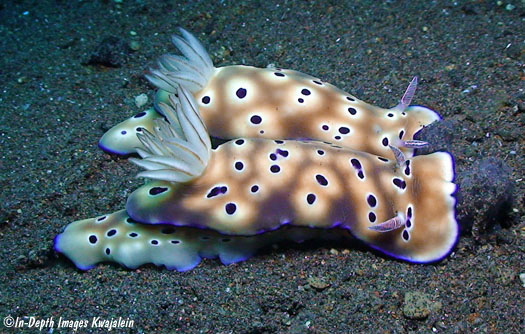
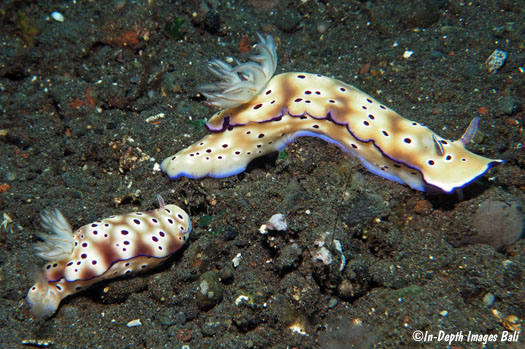
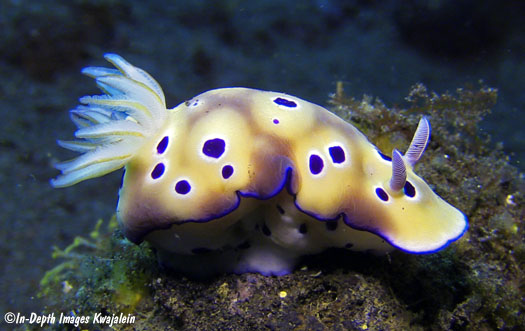
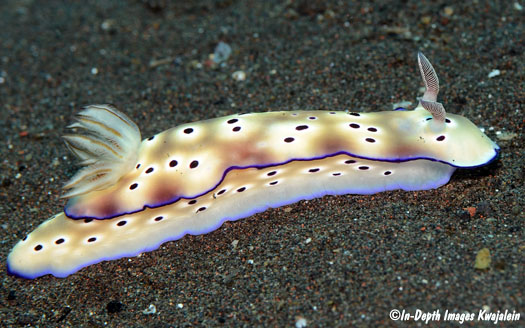
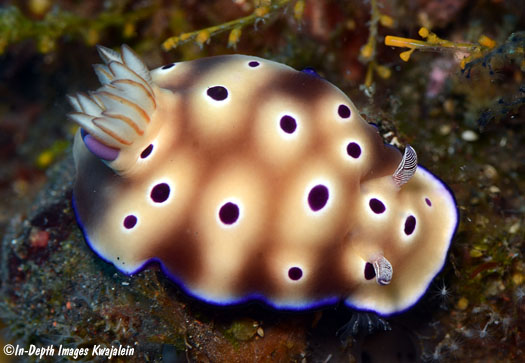
A pair from Padangbai were host to a Zenopontonia rex commensal shrimp.
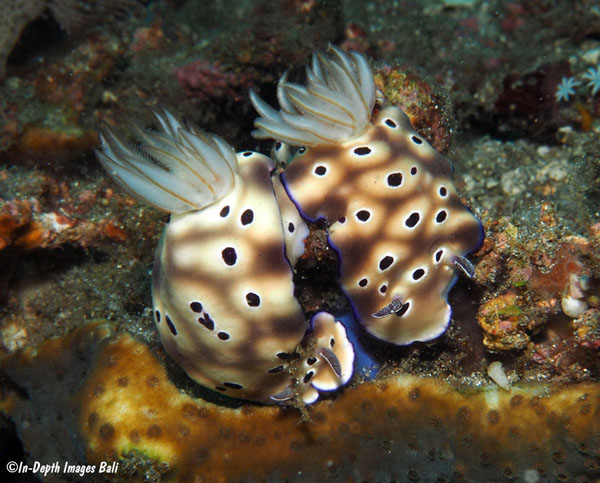
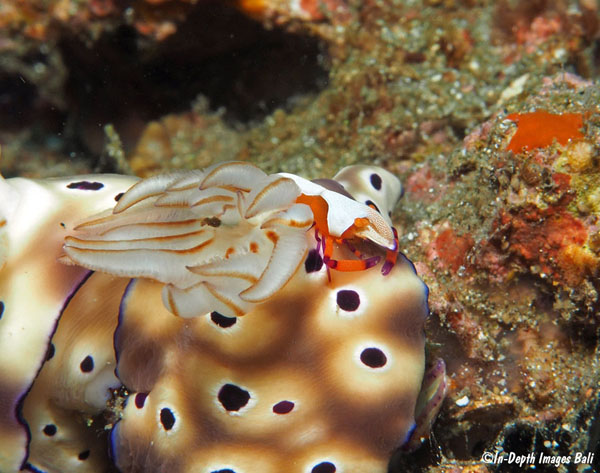
Closeup of the shrimp.
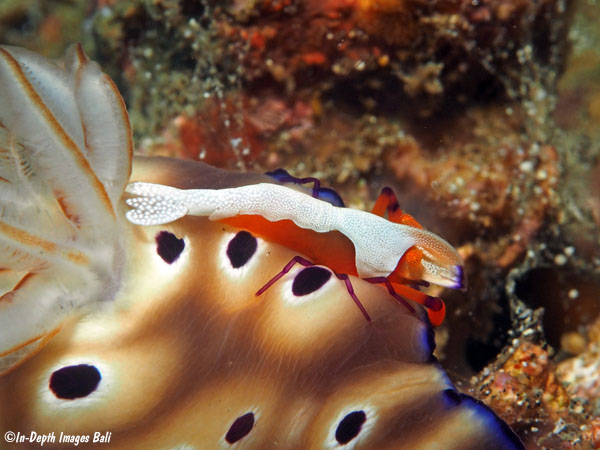
Young individuals.
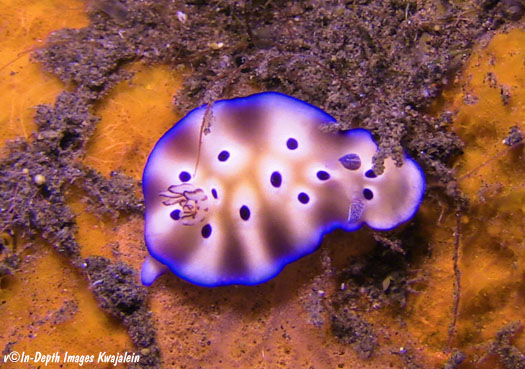
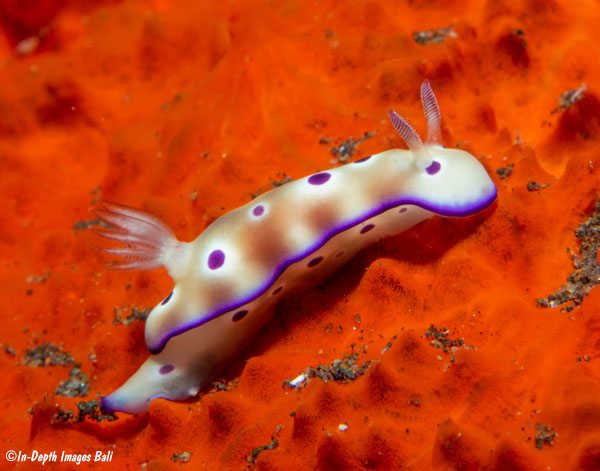
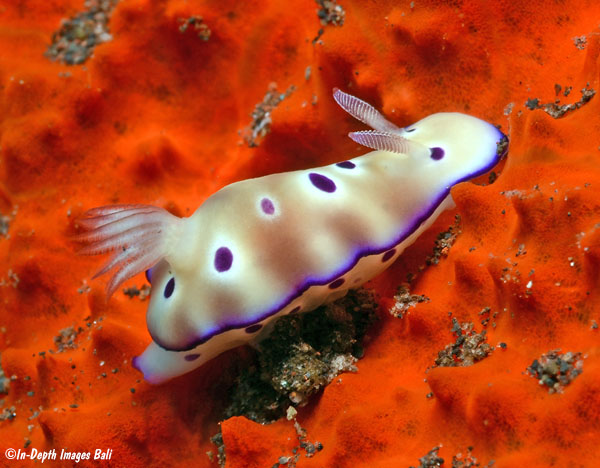

The one on the right has two dark copepod egg masses extending up from its gill opening.

The one on the right looks a bit like Goniobranchus leopardus, but it was paired up with a typical Hypselodoris tryoni.

Created 15 July 2014
Updated 23 June 2025